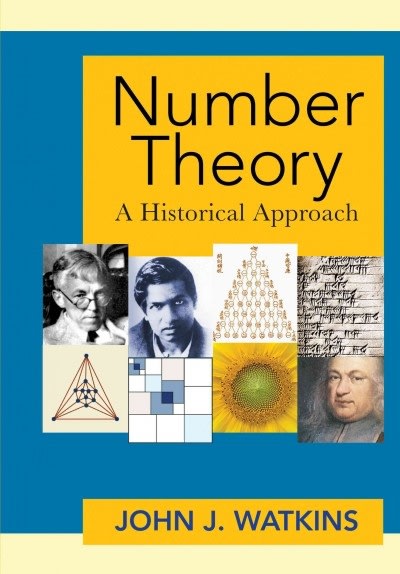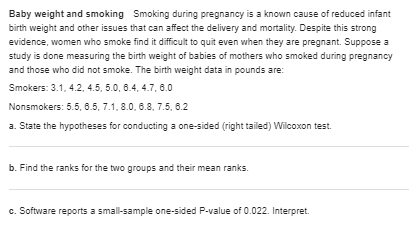
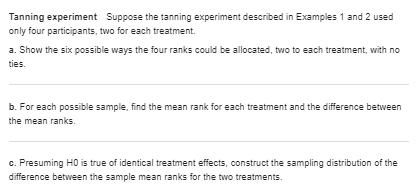
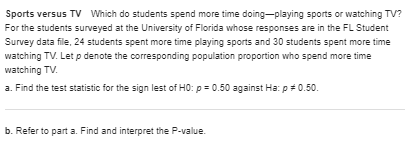
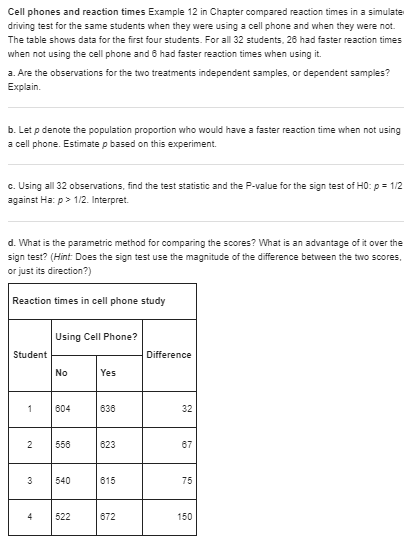
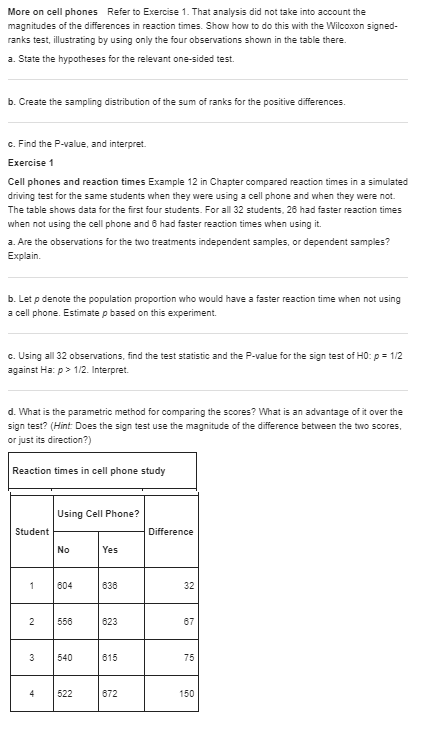

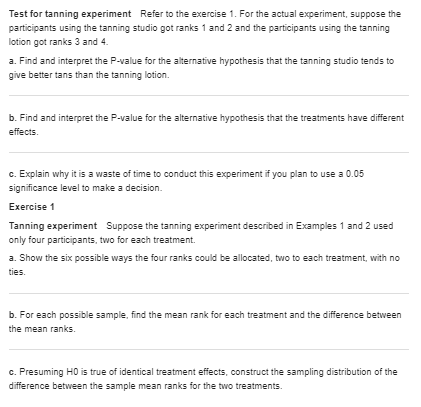
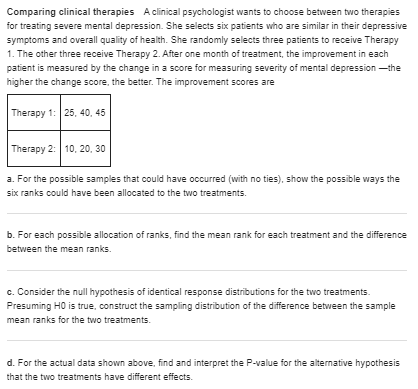
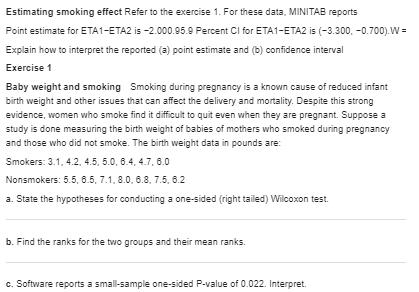
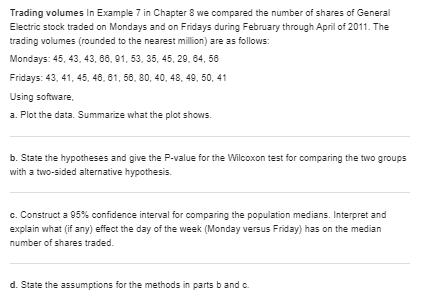

need correct answer:-
Baby weight and smoking Smoking during pregnancy is a known cause of reduced infant birth weight and other issues that can affect the delivery and mortality. Despite this strong evidence, women who smoke find it difficult to quit even when they are pregnant. Suppose a study is done measuring the birth weight of babies of mothers who smoked during pregnancy and those who did not smoke. The birth weight data in pounds are: Smokers: 3.1. 4.2. 4.5, 5.0, 6.4, 4.7, 8.0 Nonsmokers: 5.5, 6.5, 7.1, 8.0. 8.8, 7.5, 6.2 a. State the hypotheses for conducting a one-sided (right tailed) Wilcoxon test. b. Find the ranks for the two groups and their mean ranks. c. Software reports a small-sample one-sided P-value of 0.022. Interpret.Tanning experiment Suppose the tanning experiment described in Examples 1 and 2 used only four participants, two for each treatment. a. Show the six possible ways the four ranks could be allocated, two to each treatment, with no ties. b. For each possible sample, find the mean rank for each treatment and the difference between the mean ranks. c. Presuming HO is true of identical treatment effects, construct the sampling distribution of the difference between the sample mean ranks for the two treatments.More on cell phones Refer to Exercise 1. That analysis did not take into account the magnitudes of the differences in reaction times. Show how to do this with the Wilcoxon signed- ranks test, illustrating by using only the four observations shown in the table there. a. State the hypotheses for the relevant one-sided test. b. Create the sampling distribution of the sum of ranks for the positive differences. c. Find the P-value, and interpret. Exercise 1 Cell phones and reaction times Example 12 in Chapter compared reaction times in a simulated driving test for the same students when they were using a cell phone and when they were not. The table shows data for the first four students. For all 32 students, 26 had faster reaction times when not using the cell phone and 8 had faster reaction times when using it. a. Are the observations for the two treatments independent samples, or dependent samples? Explain. b. Let p denote the population proportion who would have a faster reaction time when not using a cell phone. Estimate p based on this experiment. c. Using all 32 observations, find the test statistic and the P-value for the sign test of HO: p = 1/2 against Ha: p > 1/2. Interpret. d. What is the parametric method for comparing the scores? What is an advantage of it over the sign test? (Hint: Does the sign test use the magnitude of the difference between the two scores, or just its direction?) Reaction times in cell phone study Using Cell Phone? Student Difference No Yes 1 604 636 3.2 2 556 823 87 3 540 615 75 4 522 672 150Use all data on cell phones Refer to the exercise 1. When we use the data for all 32 subjects, MINITAB reports results in the following for the Wilcoxon signed-ranks test. Wilcoxon signed-ranks test results Test of median = 0.000000 versus median not = 0.000000 I N for Test | Wilcoxon Statistic P Estimated Median diff | 32 32 490.0 0.000 47.25 a. State the null and alternative hypotheses for this test. b. Explain how MINITAB found the value reported for the Wilcoxon test statistic. c. Report and interpret the P-value. d. Report and interpret the estimated median. Exercise 1 More on cell phones Refer to Exercise 2. That analysis did not take into account the magnitudes of the differences in reaction times. Show how to do this with the Wilcoxon signed- ranks test, illustrating by using only the four observations shown in the table there. a. State the hypotheses for the relevant one-sided test. b. Create the sampling distribution of the sum of ranks for the positive differences. C. Find the P-value, and interpret. Exercise 2 Cell phones and reaction times Example 12 in Chapter compared reaction times in a simulated driving test for the same students when they were using a cell phone and when they were not The table shows data for the first four students. For all 32 students, 28 had faster reaction times when not using the cell phone and 8 had faster reaction times when using it. a. Are the observations for the two treatments independent samples, or dependent samples? Explain. b. Let p denote the population proportion who would have a faster reaction time when not using a cell phone. Estimate p based on this experiment. c. Using all 32 observations, find the test statistic and the P-value for the sign test of HO: p = 1/2 against Ha: p > 1/2. Interpret. d. What is the parametric method for comparing the scores? What is an advantage of it over the sign test? (Hint: Does the sign test use the magnitude of the difference between the two scores, or just its direction?) Reaction times in cell phone study Using Cell Phone? Student Difference No Yes 1 604 636 32 2 556 623 67 3 540 615 75 522 672 150Test for tanning experiment Refer to the exercise 1. For the actual experiment, suppose the participants using the tanning studio got ranks 1 and 2 and the participants using the tanning lotion got ranks 3 and 4. a. Find and interpret the P-value for the alternative hypothesis that the tanning studio tends to give better tans than the tanning lotion. b. Find and interpret the P-value for the alternative hypothesis that the treatments have different effects. c. Explain why it is a waste of time to conduct this experiment if you plan to use a 0.05 significance level to make a decision. Exercise 1 Tanning experiment Suppose the tanning experiment described in Examples 1 and 2 used only four participants, two for each treatment. a. Show the six possible ways the four ranks could be allocated, two to each treatment, with no ties. b. For each possible sample, find the mean rank for each treatment and the difference between the mean ranks. c. Presuming HO is true of identical treatment effects, construct the sampling distribution of the difference between the sample mean ranks for the two treatments.\fTeenage anorexia Example 8 in Section 9.3 and Exercise 1 described a study that used therapy to treat teenage girls who suffered from anorexia. The girls were randomly assigned to the cognitive behavioral treatment (Group 1) or to the control group (Group 2). The study observed the weight change after a period of time. The output shows results of a nonparametric comparison. a. Interpret the reported point estimate of the difference between the population medians for the weight changes for the two groups. b. Interpret the reported confidence interval, and summarize the assumptions on which it based c. Report a P-value for testing the null hypothesis of identical population distributions of weight change. Specify the alternative hypothesis, and interpret the P-value. MINITAB output comparing weight changes N Median Cognitive_change | 20 1.400 Control_change 26 -0.350 Point estimate for ETA1-ETA2 is 3.0595.0 Percent CI for ETA1-ETA2 is (-0.80, 8.10)W = 807.0Te Exercise 1 Teenage anorexia Example 8 in Section 9.3 described a study that used a cognitive behavioral therapy to treat a sample of teenage girls who suffered from anorexia. The study observed the mean weight change after a period of treatment. Studies of that type also usually have a control group that receives no treatment or a standard treatment. Then researchers can analyze how the change in weight compares for the treatment group to the control group. In fact, the anorexia study had a control group that received a standard treatment. Teenage girls in the study were randomly assigned to the cognitive behavioral treatment (Group 1) or lo the control group (Group 2). The figure shows box plots of the weight changes for the two groups (displayed vertically). The output shows how MINITAB reports inferential comparisons of those two means. MINITAB Output Comparing Mean Weight Changes group N Mean StDev | SE Mean cog_behav 29 3.01 7.31 1.4 control 6-0.45 7.99 1.8 Difference = mu (cog_behav) - mu (control) Estimate for difference: 3.4569095%% CI for difference 25 15 : 10 cog behay control group Box plots of weight change for anorexia study. a. Report and interpret the P-value for testing HO: p1 = p2 against Ha: p1, # p2. b. Summarize the assumptions needed for the analysis in part a. Based on the box plots, would you be nervous if you had to perform a one-sided test instead? Why? c. The reported 95% confidence interval tells us that if the population mean weight change is less for the cognitive behavioral group than for the control group, it is just barely less (less than 1 pound), but if the population mean change is greater, it could be nearly 8 pounds greater. Explain how to get this interpretation from the interval reported




























